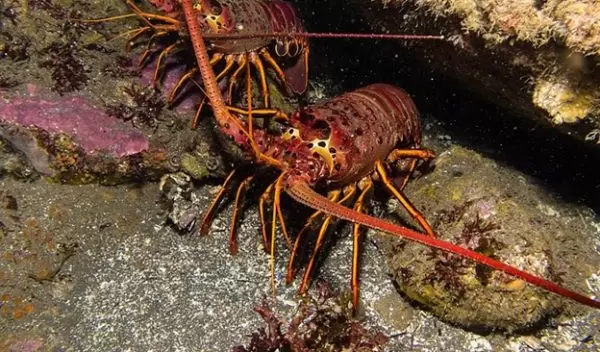
The spillover effect of marine reserves
You can't have your cake and eat it too, as the saying goes. But what if you could save your slice while enjoying the benefits at the same time? New research suggests that's possible when it comes to marine reserves.
Marine reserves are among the best conservation tools at our disposal, scientists have found. However, by their very nature, reserves take away fishing grounds, which can make them unattractive to commercial fishers. Scientists and resource managers often promote reserves as beneficial for fisheries. In theory, reserves provide a refuge for stocks to rebuild and spill over into nearby waters, leading to improved catch rates.
"And yet, there's a lot of skepticism about that because there aren't many instances where anyone's shown that to be true," said Dan Reed, a research biologist at the University of California, Santa Barbara.
Most of the work so far has documented the buildup of species populations within reserves and the subsequent spillover. "What hasn't been documented is how that actually affects the catch," he continued, namely, whether any increase in catch from spillover actually compensates for the loss of fishing grounds.
Reed and his UC Santa Barbara colleague Hunter Lenihan, along with other researchers at UC Santa Barbara and the California Department of Fish and Wildlife, sought to determine the extent to which the spillover effect compensated for fishing grounds incorporated into marine reserves.
They leveraged catch reports from lobster fishers and conducted scientific surveys. Their results, published in Scientific Reports, affirm the benefits reserves confer to fisheries and ecosystems.
The team compared lobster populations and catch records from waters off the coast of Santa Barbara and Goleta. From 2012 through 2018, divers conducted surveys of the size and abundance of lobsters at five locations in the Santa Barbara Coastal Long-Term Ecological Research site, part of the U.S. National Science Foundation LTER network. Three of these reefs have always been open to fishing, while two were incorporated into marine reserves in 2012.
Records indicate that a roughly 225% increase in catch near marine reserves was accompanied by a 250% increase in fishing activity; however, the researchers note that this isn't merely a case of laying more traps and catching more lobsters.
The increased effort was targeted largely near the borders of the reserves as fishers "fished the line" to target lobsters that spilled over from the reserves into fishable areas. "Without spillover from a reserve, increased fishing effort is much less likely to result in increased catch," said Reed.
"Our data suggest that in the case of lobsters, reserves have the potential to lead to a higher sustainable catch," he concluded.


